lucky cola For Ricky Lee, to write is to be free
Updated:2024-11-03 08:54 Views:93
Ricky Lee is always writing.lucky cola
Every day, the 76-year-old author and screenwriter spends his first hours awake—and nearly every waking minute of the day at that—writing, ideating, telling stories.
“I don’t stop writing, I think. I think 90 percent of my time, I am writing. In my head, while we’re talking, may ideas,” he says, as we sit inside the library at his Quezon City home, where he usually holds his writing workshops. “Minsan sa umaga dito, impatient ako ’pag may bumating tao, ’yong train of thought ko biglang [nawawala]. Naiisip siguro nila ang sungit ko naman, pero ’yon, [it’s because] I’m writing the whole time. Every time. I never stop writing.”
Lee admits this is a problem for him, as many have told him to slow down and take better care of his health. “Keeping busy is not the problem, slowing down is,” he says with a chuckle.
The National Artist for Film and Broadcast Arts professes he is “maligalig”—always moving, always working on something. It is this mode where he feels most at home. He never sticks to a single project, preferring to work on many ideas simultaneously. “Usual sa’kin ’yong na-de-derail. Maligalig akong tao, as I keep telling people. Wala akong direksyon sa buhay, meaning nag-set up na ako ng certain path, and then something suddenly attracts my attention or diverts me, or bigla akong may naisip. Liliko ako. Basta may likuan, liliko ako. Literally, sa kalsada, and ito metaphorically and figuratively. ‘Pag may lilikuang interesting, liliko ako.”
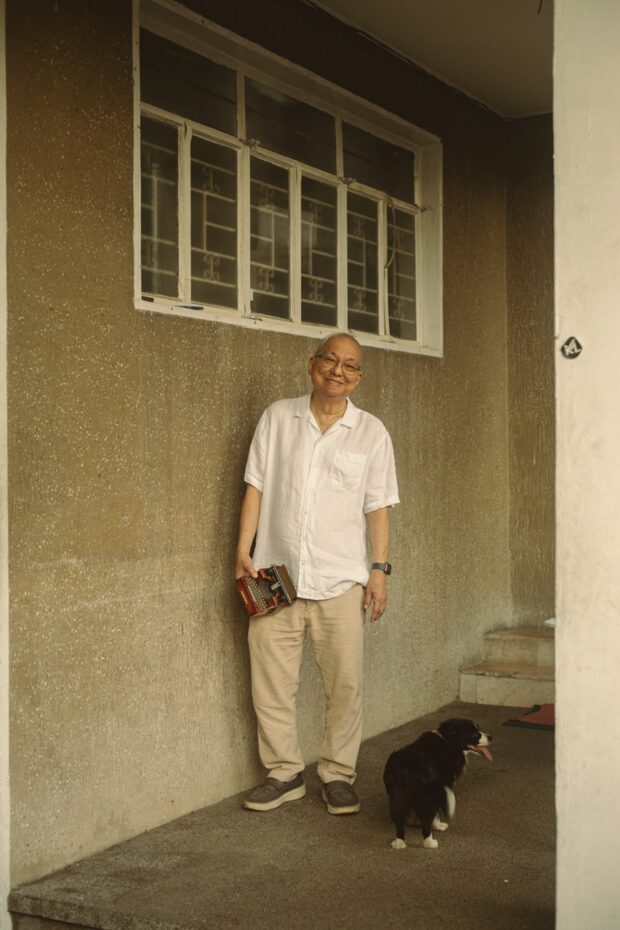
This was also the case with his new novel, “Kalahating Bahaghari,” which he just launched at the Manila International Book Fair last September. He had initially set out to write his memoirs, but in the process of going through his diaries from the ’70s, the idea for the novel sprung.
“May nakita akong mga situations and anecdotes. Sabi ko, parang interesting nito. So na-sidetrack ako, and I started to think of that germ of an idea,” Lee says of the novel. It was the fastest he had ever written a novel, he adds, having worked on it for roughly only four to five months because he had wanted the book to come out at the book fair.
The novel, which follows the life of a family in the span of 50 years, touches on the various challenges, relationships, and experiences the family members have. It also sheds light on the different experiences of the LGBTQIA+ community. Lee calls it a very personal novel.
Mountains of orders for the book are stacked all around his house, some still waiting for his personal dedication and autograph, which many readers continue to request when they buy his work.
At the last book fair, he shared his joy at seeing people supporting local publishers. “Ilang percent sa kanila, mga nanay at tatay na may kasamang anak. Marami silang kasamang mga bata, ine-expose sa mga libro. How nice!” he smiles. “Kung minsan, may nagpapa-autograph sa’kin, at least in this occasion once or twice, [may nagsabing] i-dedicate niyo po sa anak kong five years old, para paglaki niya makita niyang kinausap niyo siya do’n sa libro.
“’Yong love for books and Philippine literature… [I] feel very excited and enthralled na nagsusulat pa rin ako sa isang panahon where ang publishing sa Pilipinas ay ganitong nag-bu-bloom.”
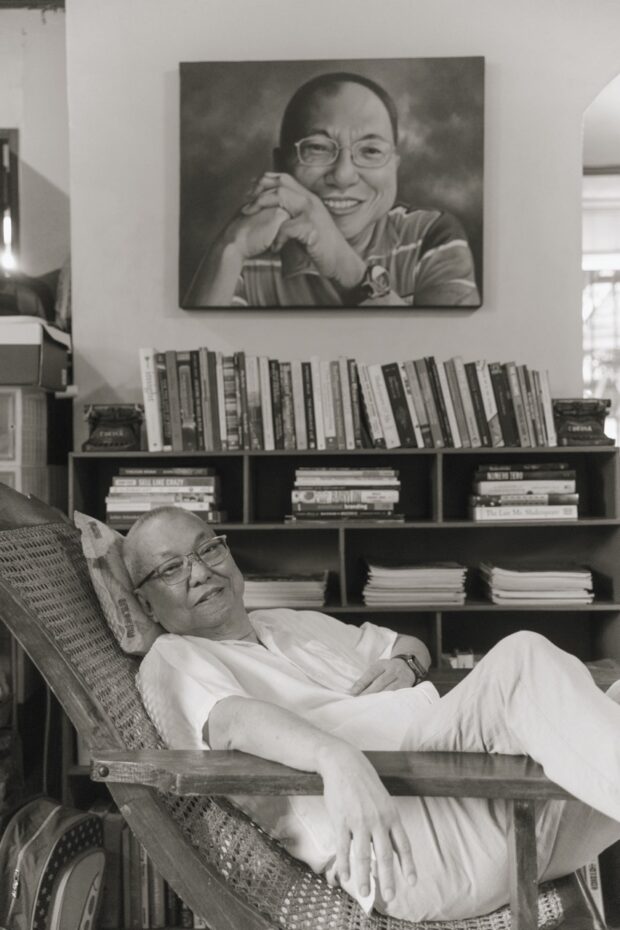 This spot in the living room is Lee’s favorite place to relax after writing.
This spot in the living room is Lee’s favorite place to relax after writing.
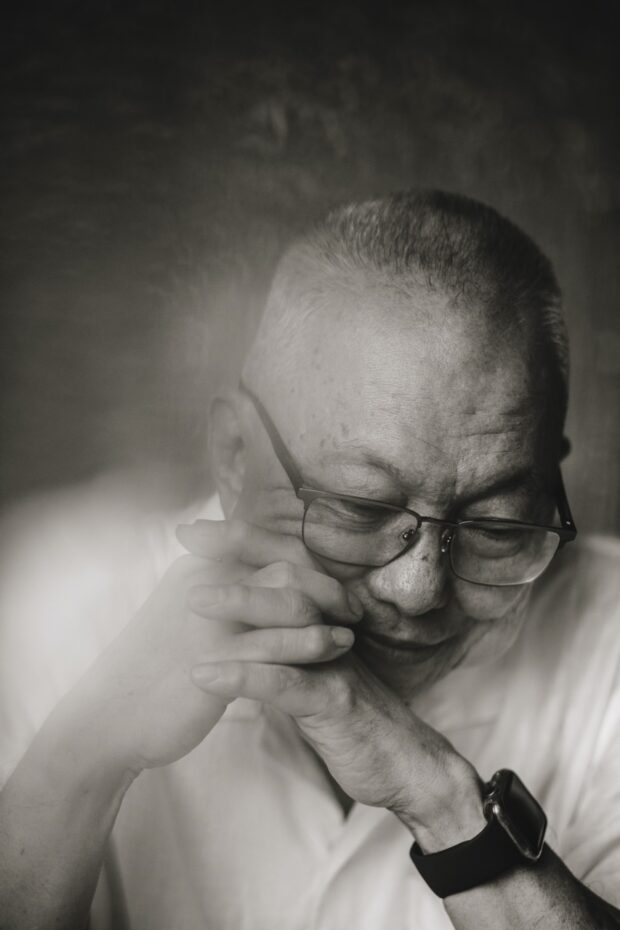
Despite having just finished a novel, Lee shares that the semblance of peace was short-lived. “Immediately after finishing ‘Kalahating Bahaghari,’ na todo trabaho whole day, every day, every single minute of the day, nakahinga ako nang maluwag. Sabi ko kay Adel (his assistant), ‘Finally, triumph! Tapos na,’” he says. “Then hindi na ako makatulog. I would wake up at one in the morning, at three in the morning, [thinking], ‘Ano na’ng purpose ng buhay ko? Ano na’ng gagawin ko? Saan ako pupunta?’
“Suddenly parang nawalan ako ng compass, nawalan ako ng direction. So ‘yong maraming ginagawa actually gives me direction.”
So he picked up his memoirs again. And aside from being a creative consultant for GMA’s “Pulang Araw” and “Widow’s War,” he’s also been visiting the production of the upcoming Metro Manila Film Festival (MMFF) entry, “Himala: Isang Musikal.” He’s been brainstorming for songs for the musical version of his film “Moral” that he’s set to make with National Artist for Music Ryan Cayabyab. Then he moved to collating his non-fiction works for an anthology. And that’s not even half of everything he’s working on.
“It makes me feel really relaxed and at home and not directionless when I’m pursuing a lot of things that I like,” he says.
The writer’s journeyAny writer will be familiar with Lee’s “Trip to Quiapo.” It may well be considered an aspiring scriptwriter’s bible, for its comprehensive look into the process of telling stories for the screen.
The book’s title comes from its first chapter, where Lee tells the story of three writers who take different paths to Quiapo. Each writer has their own methods, some may be more direct in getting to the destination quickly, and yet another, who takes detours, still makes us believe they got to Quiapo in the end. The point is this: Know the way, and then find a new way—or even change directions entirely and find a new end point.
As they say, you teach what you know; and this approach, of welcoming all the bumps and detours of the way to a story, is very much Lee’s own process, too.
Before Lee published his first novel “Para Kay B” in 2008, he shared having had to rewrite a particular chapter multiple times because it just wasn’t working, it wasn’t resonating with the group he had entrusted to read his drafts and brainstorm with him. “The thing with writing is, dahil hindi siya naka-template o nakakahon, [when something’s not working,] you never really know the real problem [right away.] Humaharap ka sa pader, not knowing what to do or how to solve the problem or what choices to make. And so you get to a point na, ‘Baka mali akong naging writer, baka all these years naloko ko lang ’yong mga tao to believe I’m good. Pare-pareho pala kaming nag-ilusyon.’ You get to that point eh.”
“And I think it’s important that you get to that point. Because then you’re forced to plunge deeper into yourself, into your issues, into areas of your writing na maybe hindi mo pa na-to-touch dati. Maybe there are areas of your pagkatao that you’re not really aware of or haven’t gotten in touch with, and because you’re solving the problem with this chapter or character [and you’re at a dead end], kailangan mong banggain ’yong dead end na pader para mabutas.”
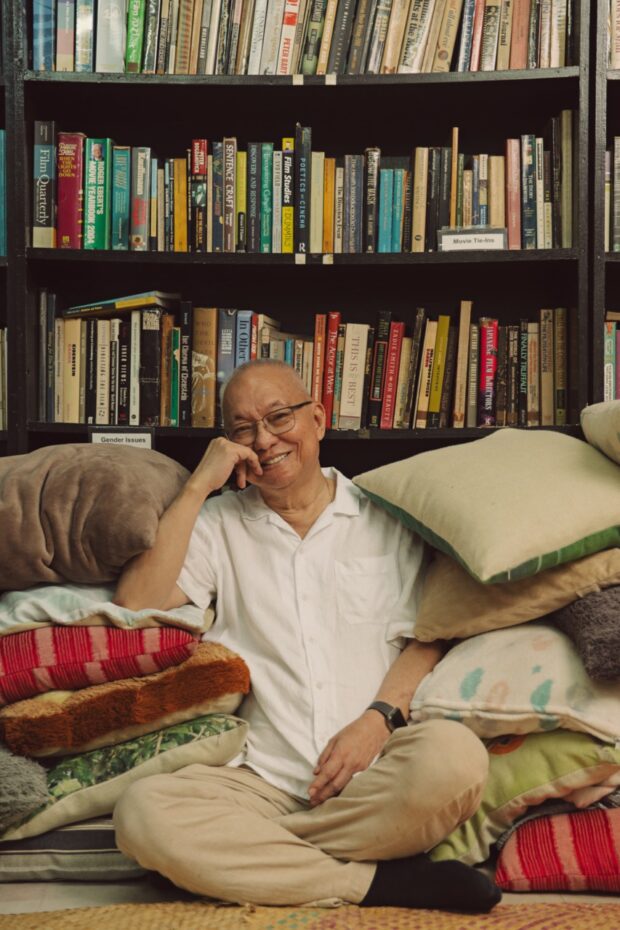 Lee plans to resume his free film script writing workshops this November.
Lee plans to resume his free film script writing workshops this November.
Pagkatao is a major element of Lee’s writing as well as his workshops, which he has been conducting since 1982. It’s not just about injecting personality into your work; it’s more about having an awareness of your entire self, as your writing will inevitably reflect, unearth, and even process the aspects of yourself you might not have thought about before.
“In a workshop, hindi naman talaga siya mainly para matuto ng techniques or rules sa’kin. Secondary lang ’yan. Sa’kin, it’s to build a community where bawat isa sa kanila will feel na may safe space siya para mag-grow ang kaniyang pagkatao, dahil ang gagamitin niyang tool sa kaniyang writing ay ang kaniyang pagkatao. ’Yong pagkatao mo, ’yon ’yong lalabas sa writing mo. Ang pinapanday sa workshop ay ang pagkatao ng bawat isa.”
In fact, he starts his workshops with what he calls a “gasgas nang quote:” “Mahalagang maging mabuting scriptwriter, pero mas mahalagang maging mabuting tao.”
Although he has been a writer and mentor for decades, Lee doesn’t sugarcoat the struggles of the writer’s path. In many instances, he has called it difficult and excruciating, a path where you’re also constantly pushed to question yourself.
“‘Hindi yata ako marunong magsulat.’ We always go through that,” he says, of the apprehensions that come with the career path. “May basic questions na paulit-ulit sa writer eh, all throughout, no matter if you’ve been writing for 10 years, or 20 years, or 50 years. One is, tama ba talaga na naging writer ako? At certain points dumadating eh, lalo na sa Pilipinas na ang hirap-hirap mabuhay bilang writer.
“The next question is, am I good? You always question yourself because umaabante ang panahon at ang sibilisasyon, ang sining, baka you’re being left behind.”
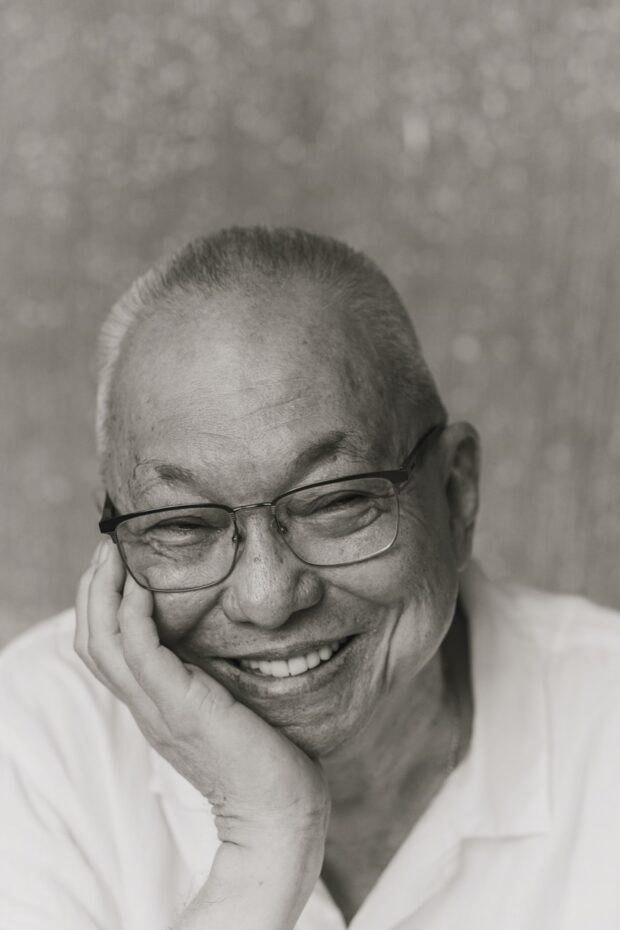
Arduous though writing may be, it is not without its glimmers. For Lee, it’s actually in the phase of feedback.
Over the decades, he’s learned to compartmentalize the reactions he gets. “Maraming mga comment na… pag binasa, ‘Wow, Ricky!’ kasi ako ang gumawa,” he laughs, gesturing a thumbs up as he recalls the comments. “I appreciate that. Kasi kailangan mo ng affirmation, ng confirmation. Kailangan mo ng pat sa back eh. Kung puro nega, mawawalan ako ng energy. So may silbi sila [na positive lang ang comments]. Kino-compartmentalize ko lang kung saan ang [may] tulong.
“’Yong iba, very constructive, may nakikita sila na hindi ko nakita. May comment na hindi ko necessarily tatanggapin, pero dahil nakita nila [’yon], it leads to another direction at may naisip akong maganda. Ang daming puwedeng mangyari eh. In short, nakita ko na ’yong beauty of collaboration. Other people’s brilliant minds, kapag hinayaan kong pukpukin [nila] ’yong mind ko, it can create magic. Hindi ako mayabang thinking na kaya ko ’to o mas mahusay ako. It’s not a matter of tama ako o sila. It’s a matter of what will make the work better.”
Writing to be freeIf your space is a reflection of your mind, it’s no surprise then that Lee’s is full of stories. All over his house, from the library, to the living room, to the guest rooms, even by the staircase and in a bathroom, shelves are bursting with his collection of books, CDs, and DVDs. Almost every genre, author, and artist imaginable can be found on his shelves, though he prefaces our team’s browsing by saying the books have yet to be properly sorted again.
In the workshop space, towering above the piles of pillows and mats his workshoppers use (“In all postures [sila], may nakaupo, may nakahiga, may nakahilata,” he says of the dynamics within his workshops), are more books, along with posters of the films he’s written, a handful of which have been restored and are set to screen for the MMFF’s 50th anniversary. One shelf, running across the entire length of the room’s wall, is packed with trophies, plaques, awards, and other recognitions.
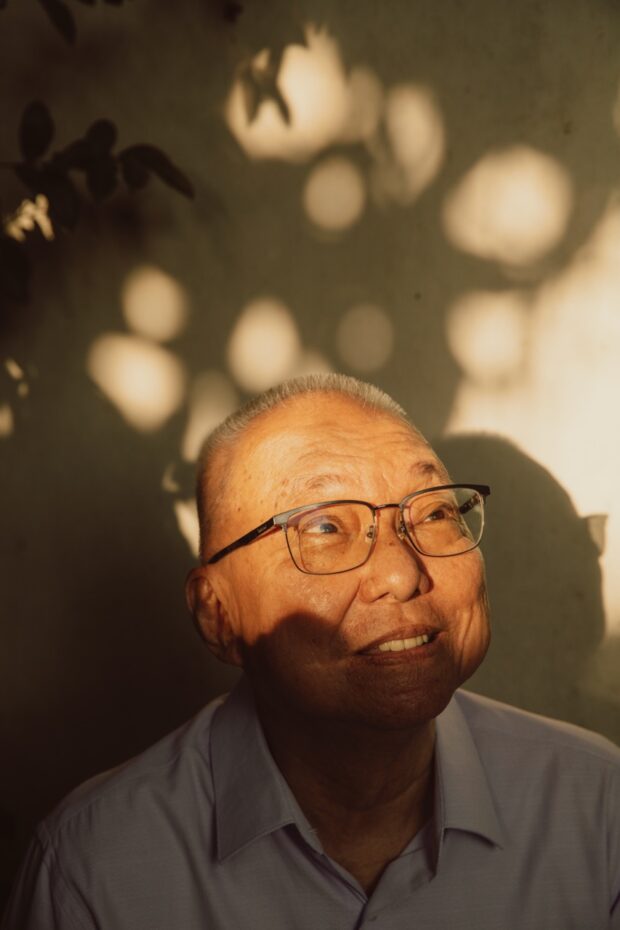
But the true boon of writing goes beyond the appreciation and the accolades, according to Lee. For the “Himala” scriptwriter, what truly makes his career as a writer fulfilling is in how it frees him.
“Every act of writing ay isang act ng pagpapalaya ko sa sarili,” he says. “Mahiyain akong tao, since childhood. May feeling ako na nakakulong ako sa… being unworthy, feeling inferior, or kung ano man ’yong mga problema ko at depekto. May feeling akong ganon. And I think maraming writers ang may feeling na ganon. You feel na nakakulong ka. Pero every time na nagsusulat ako, ’yong mahiyain na ako, nagiging teacher na hindi mahiyain, nagiging loud na trans, nagiging ako ’yong ibang tao na hindi ako. So nakakalaya. ’Yong maliit na ako, nagiging maraming ako, so nakakalaya ako in so many ways when I write.
“Pag nagsusulat ako, at marami akong characters nasulat, and feeling ko nag-succeed ako, nabasa ng iba at nagustuhan nila sa book fair, nagpapa-autograph sila, I feel that I’m seen. I feel that I’m validated as Ricky. I feel that nabuo ako.
“That’s why I write.”lucky cola